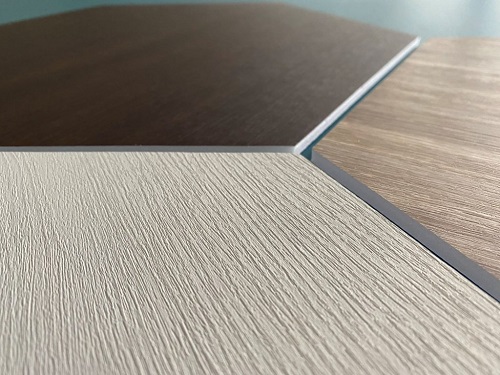 Friday, July 26, 2024
Friday, July 26, 2024  Friday, July 26, 2024
Friday, July 26, 2024 
When an interior designer creates a new space, they are facing multiple concerns simultaneously:
Myriads of material types are impossible to list. For furniture, it can be acrylic, wooden or glass surfaces. For walls and panels, one can execute exquisite marble or wallpaper. The list continues indefinitely and is only limited by client’s preferences. Any designer needs to answer positively to most of the questions mentioned above if they want to satisfy a client.
Times are changing, so are trending materials. Nowadays, many people in the industry choose vinyl finishes for various design objectives. Vinyl finishes are also called interior film or architectural film. Here we would like to break down the interior film benefits for designers and how they might be used (although you always know better about project applications).
Vinyl replicates real materials
You are a designer, and you want the best outcome for your project – the freshest and the realest materials. Sometimes you will need wood rails, marble walls and concrete panels (just like in the office picture above). Such materials have a very specific tactile sensation, like a slippery marble surface or wood grains. Bodaq interior film replicates them flawlessly. In fact, this is the main reason why vinyl is getting so popular in interior design. People who see the project in real life simply cannot tell the difference. A table wrapped with wood vinyl or a real wood table? Unless you did the installation, you won’t be able to tell which one it is.
Cost savvy and durable
Both clients and designers want to achieve the best design quality possible, but the complicated installation and material pricing may restrain the result. For example, the average renovation cost for an office space is $200 per sq. ft. Contractors and installers who work with vinyl, on the other hand, usually charge only $8-12 per sq.ft. Even if it’s an incredibly intricate work, like a front door with multiple panels, stiles and rails, the pricing would be multiplied by three. Still, it is a way more budget-friendly option than a typical office renovation. The resulting brand new office door, however, will look absolutely the same, whether you order a custom design or wrap it with the interior film.
Many have had an unpleasant experience with vinyl substitutes in the past so they are used to think low-cost compromises quality. Counterintuitively, it’s quite the opposite. Bodaq interior films maintain the original appeal and preserve texture characteristics for 10+ years. Skipping tedious details about Hyundai L&C vinyl manufacturing with the use of air-release technology and so on, we can say that vinyl is more durable than many real materials. For example, a table wrapped with vinyl wood is more resistant to scratches, moisture stains and other damage types.
Design Flexibility
You can combine solid black with high gloss white on any surface. You can turn a wooden chair into a concrete one. Virtually every designer has some ideas that are hard to implement in real life. Like golden cabinets and dark metal drawers, such ideas sometimes don’t get along with common sense. The picture below, on the contrary, tells us otherwise. The cabinets and drawers are simply wrapped with Bodaq architectural film. Additionally, the project is adjustable in the long-term. If the client gets bored with that dazzling color palette, the kitchen can be wrapped in new textures at ease.
Vinyl is a sustainable practice
The days when no one cared about what your house is made of are long gone. One of the reasons why people choose natural materials over plastic substitutes is sustainability. Vinyl interior film brings the same benefit on the table at all stages:
Interior design is a visual art, so one picture is worth a thousand words. Visit Bodaq gallery and see with your own eyes how interior films may vary in texture and colors.